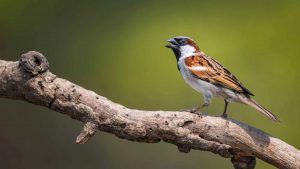
34 interesting facts about partridge
- 👁️ 1558
Partridges are a group of medium-sized birds known for their ground-dwelling habits, belonging to the pheasant family. They are native to Europe, Asia, Africa, and the Middle East, adapting to various habitats from agricultural lands to deserts. Partridges are celebrated in culture and literature, notably in the famous Christmas carol “The Twelve Days of Christmas.” These birds are admired for their beautifully marked plumage, distinctive calls, and the role they play in the ecosystem as seed dispersers and prey for predators. Here are 34 interesting and informative facts about partridges that offer a glimpse into their fascinating world.
- Partridges belong to two families: Phasianidae (true partridges) and Perdicidae (Old World partridges).
- The Grey Partridge, native to Europe, is known for its distinctive “orange” face.
- Partridges are non-migratory birds, spending their entire lives within a limited area.
- Unlike many birds, partridges prefer running to flying to escape predators.
- The Chukar Partridge is the national bird of Pakistan.
- Partridges can be found in various environments, including grasslands, deserts, and snowy areas.
- The diet of partridges mainly consists of seeds, but they also eat insects, especially during the breeding season.
- Partridges are monogamous, forming pairs that last at least throughout the breeding season.
- A group of partridges is known as a “covey.”
- The incubation period for partridge eggs is about 23-25 days.
- Female partridges lay up to 20 eggs in a single clutch, one of the largest clutch sizes among birds.
- The Grey Partridge is often associated with farmland and has suffered from agricultural intensification.
- Partridges have a unique dust bathing behavior, which helps them maintain their feather condition.
- Some species of partridges, like the Snow Partridge, live at high altitudes, close to the snow line.
- Partridges have been hunted for sport and food for centuries, featuring in hunting literature across cultures.
- The Red-legged Partridge, introduced to the UK for hunting, has successfully established populations in the wild.
- The Sand Partridge is adapted to life in arid conditions and can be found in the deserts of the Middle East and North Africa.
- Many partridge species are ground nesters, laying their eggs in simple scrapes lined with plant material.
- The call of the Grey Partridge is a distinctive “kerrick” sound, often heard in the early morning or late evening.
- Partridges are known for their explosive takeoff when startled, a strategy to confuse predators.
- The Rock Partridge, native to Europe, prefers rocky and mountainous habitats.
- Conservation efforts for partridges include habitat management and protection from overhunting.
- Partridges have been featured in art and literature, symbolizing various themes from love to fertility.
- The Bamboo Partridge, found in Asia, inhabits dense undergrowth and feeds on bamboo seeds.
- Partridge chicks are precocial, meaning they are well-developed and able to leave the nest shortly after hatching.
- In winter, partridges may form larger flocks to improve their chances of detecting predators.
- The Barbary Partridge is the only partridge species native to Africa, specifically the Maghreb region.
- Partridges use a variety of vocalizations to communicate with each other, including calls to maintain group cohesion.
- The See-see Partridge gets its name from its distinctive call, which sounds like “see-see.”
- Partridge meat is considered a delicacy in many cuisines and is featured in traditional dishes.
- In folklore, finding a partridge in a pear tree is considered a sign of good luck and prosperity.
- Some partridge species, like the Grey Partridge, practice a behavior known as “tumbling,” where they perform aerial acrobatics to distract predators from their nests.
- The conservation status of partridge species varies, with some being of least concern, while others face threats from habitat loss and hunting.
- Partridges have inspired various cultural traditions, including the French name for a social gathering, “une partie de perdrix,” meaning a pleasant time spent with friends.
Partridges are remarkable for their adaptability, social behaviors, and the significant role they play in both natural ecosystems and human culture. Despite facing challenges from habitat loss and hunting, many species continue to thrive due to conservation efforts and their ability to adapt to changing environments. Understanding and appreciating the intricacies of partridge life encourages a deeper respect for these birds and the landscapes they inhabit.











